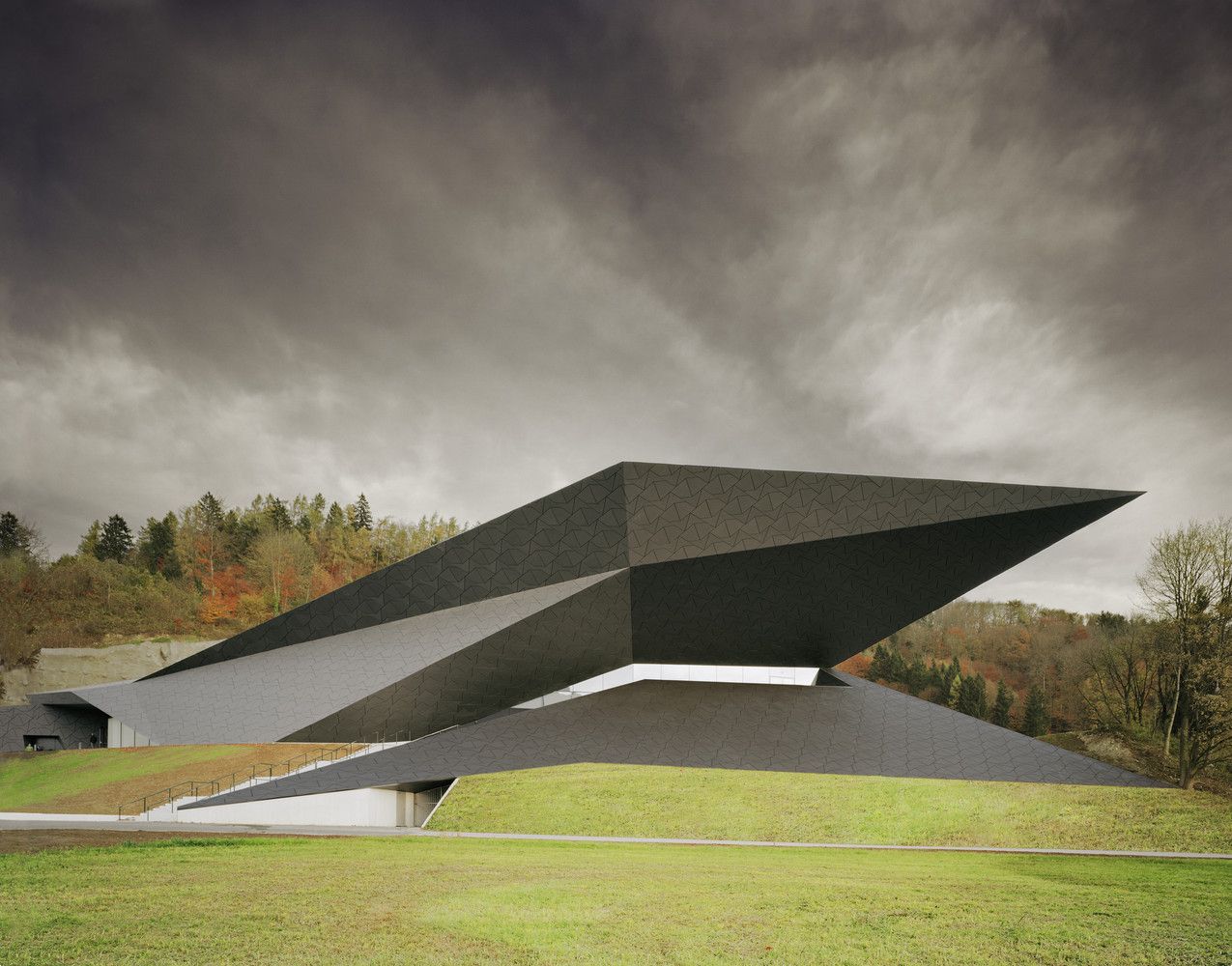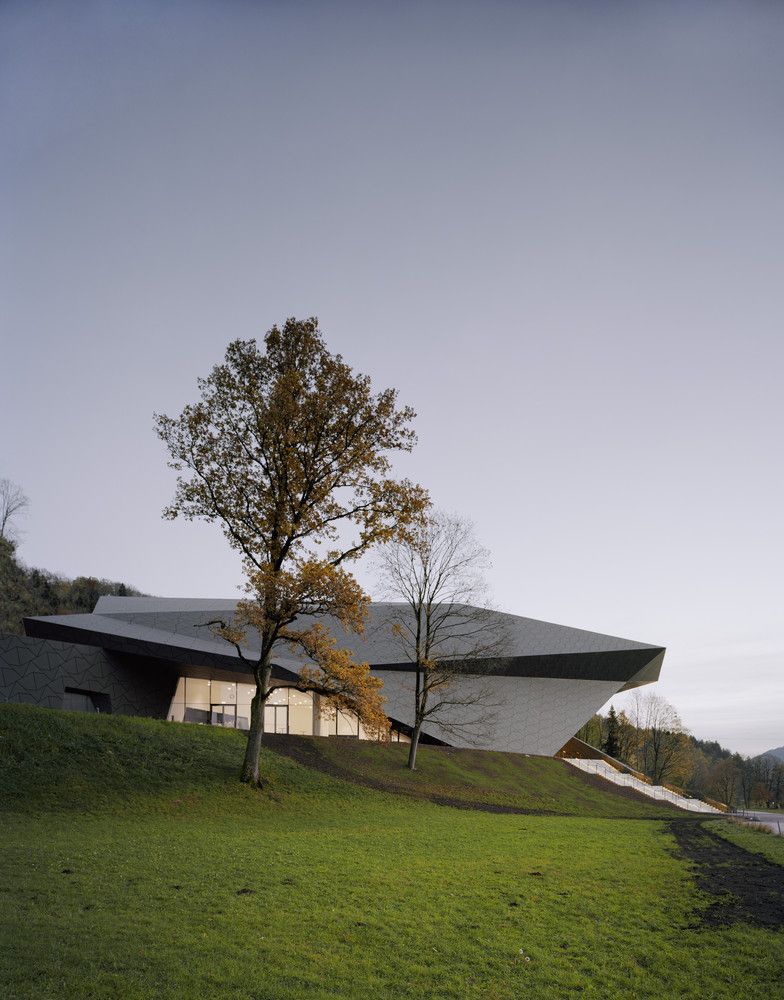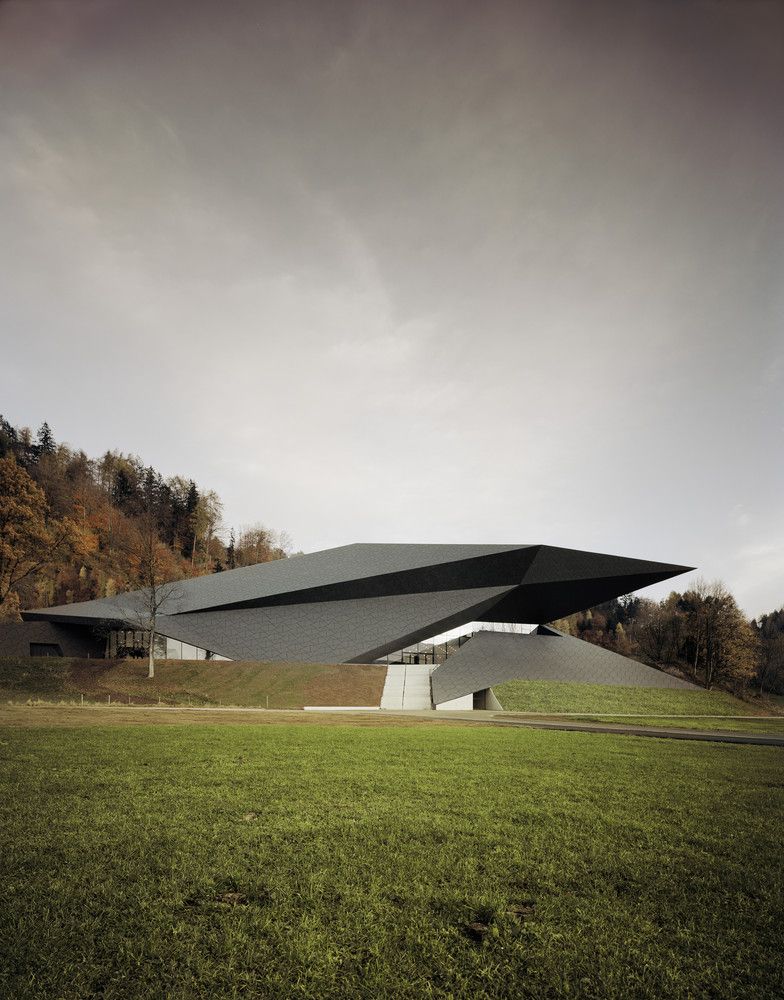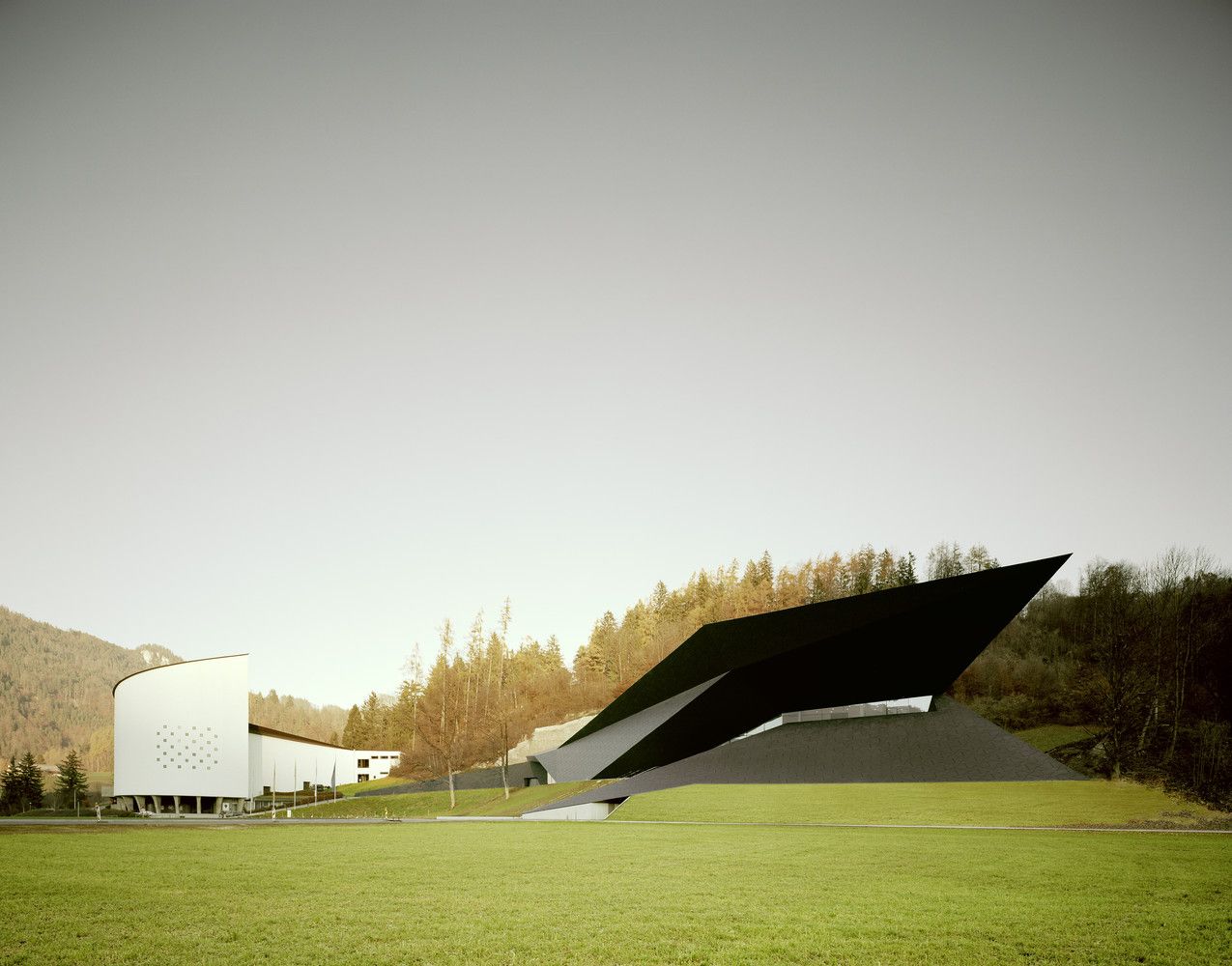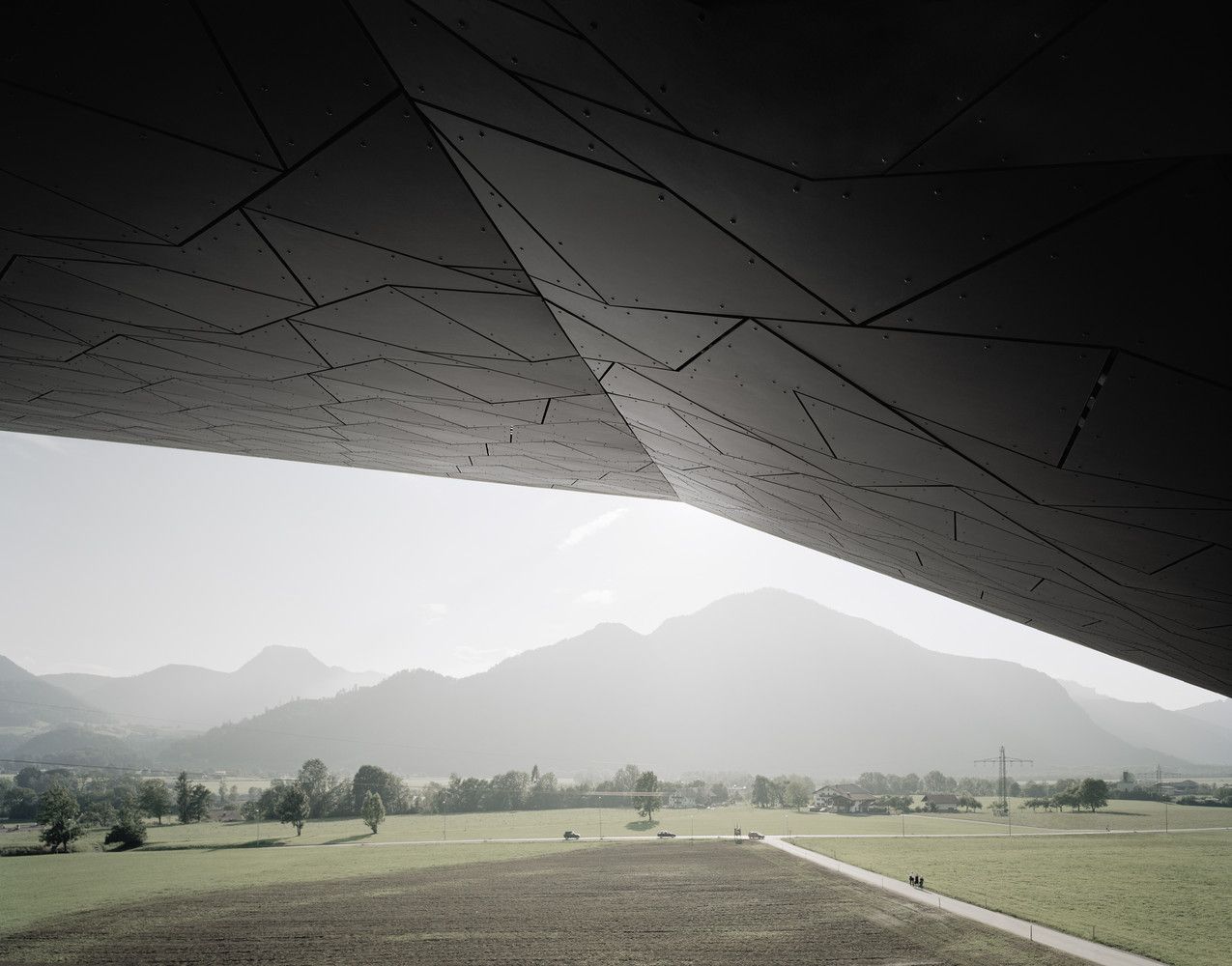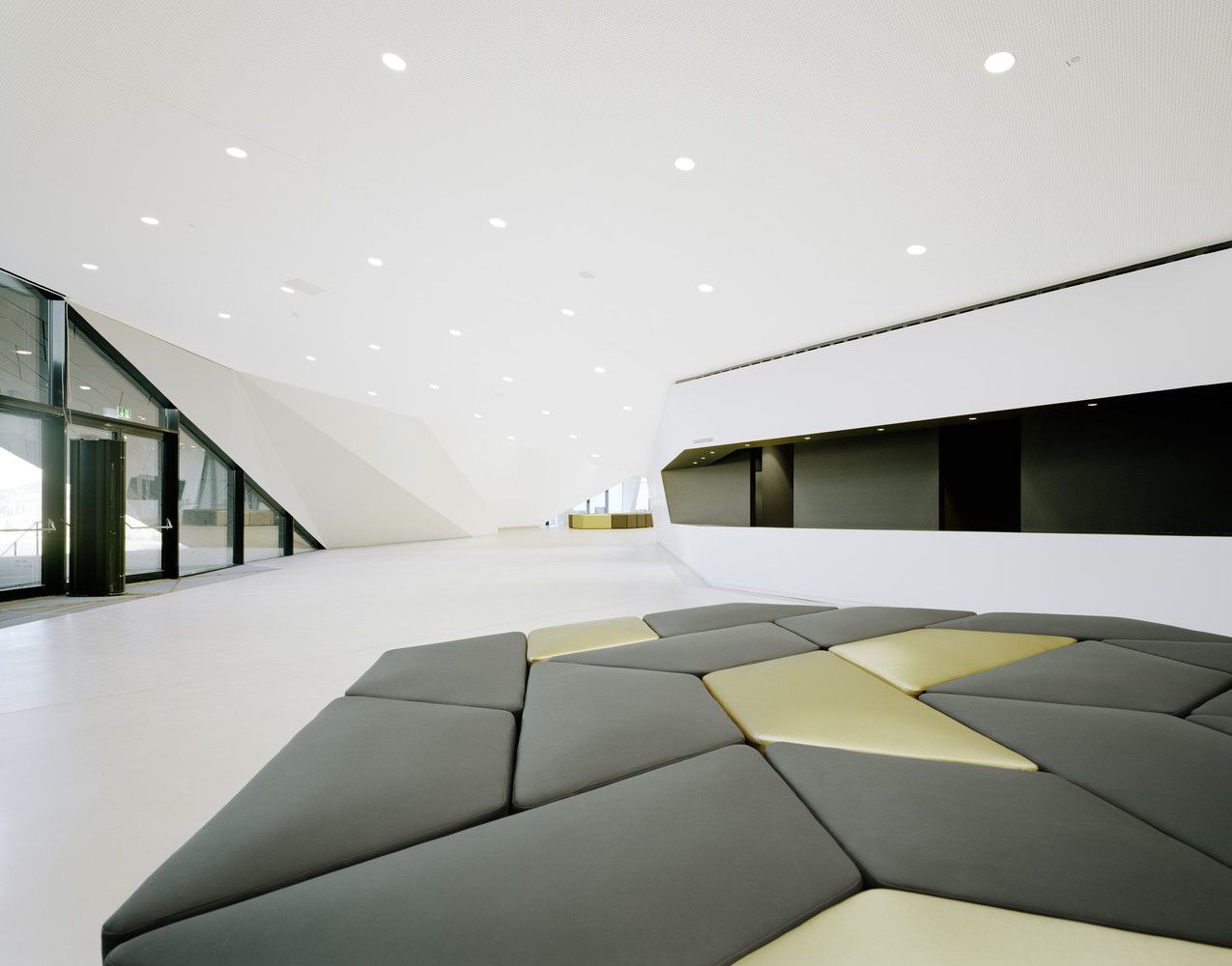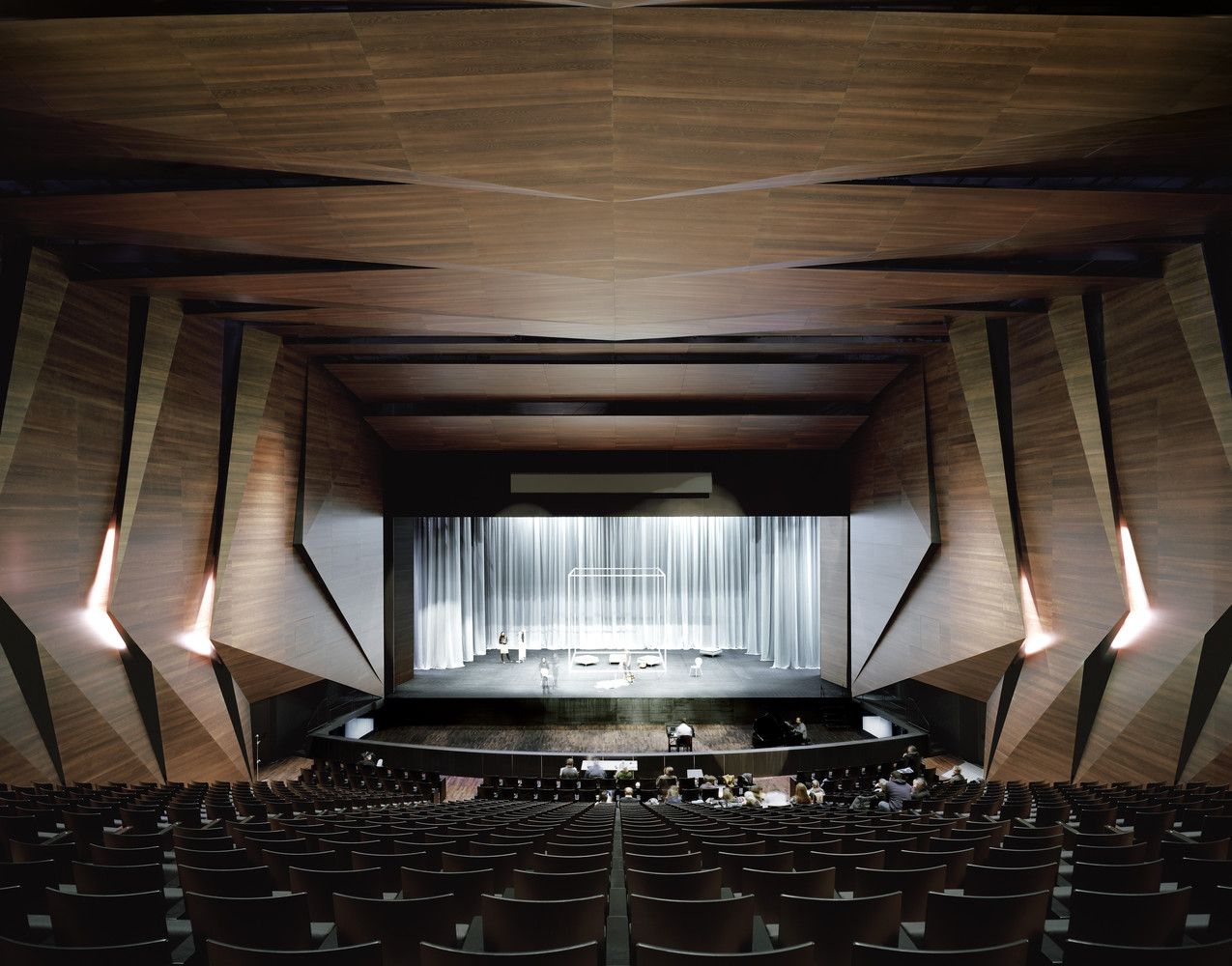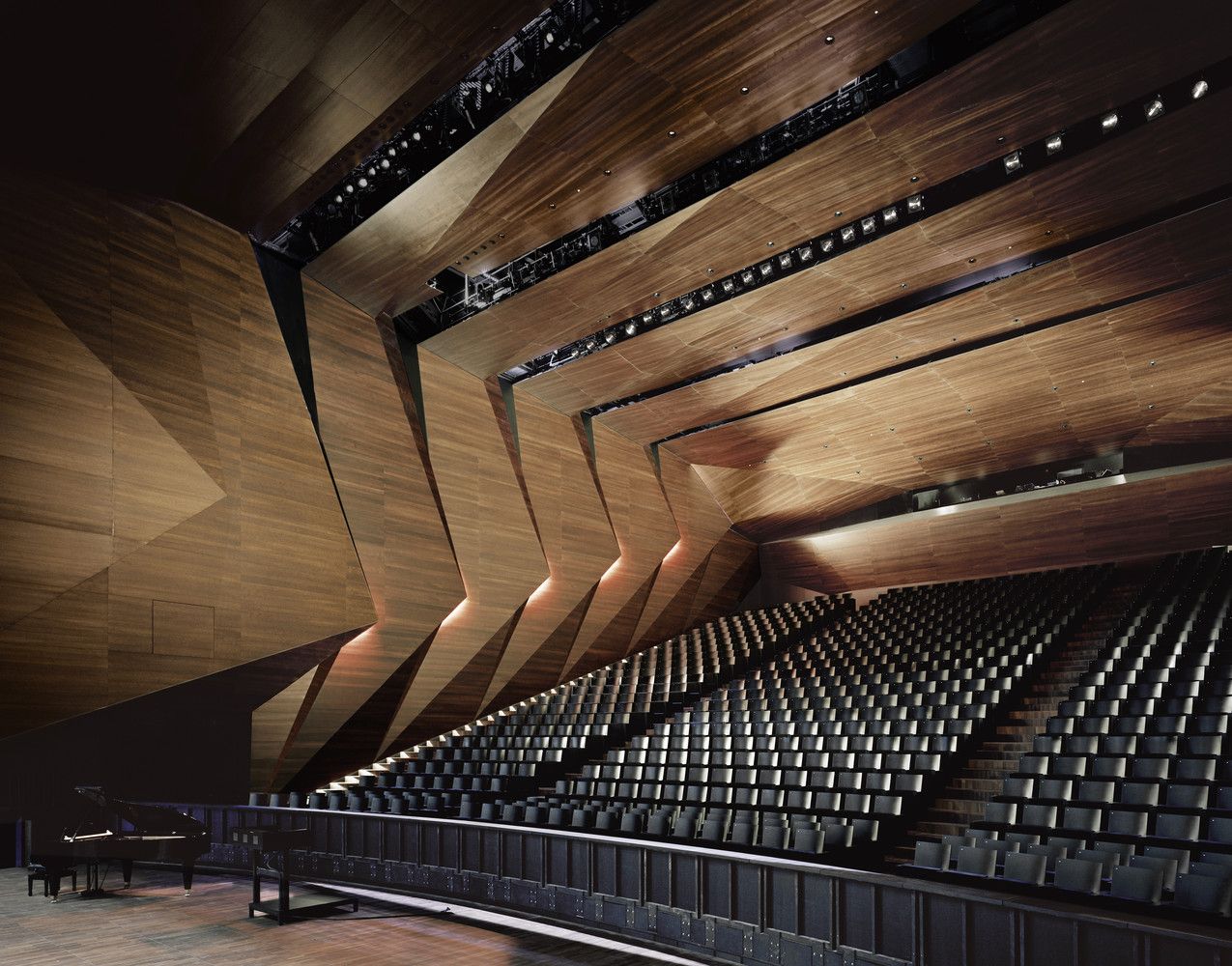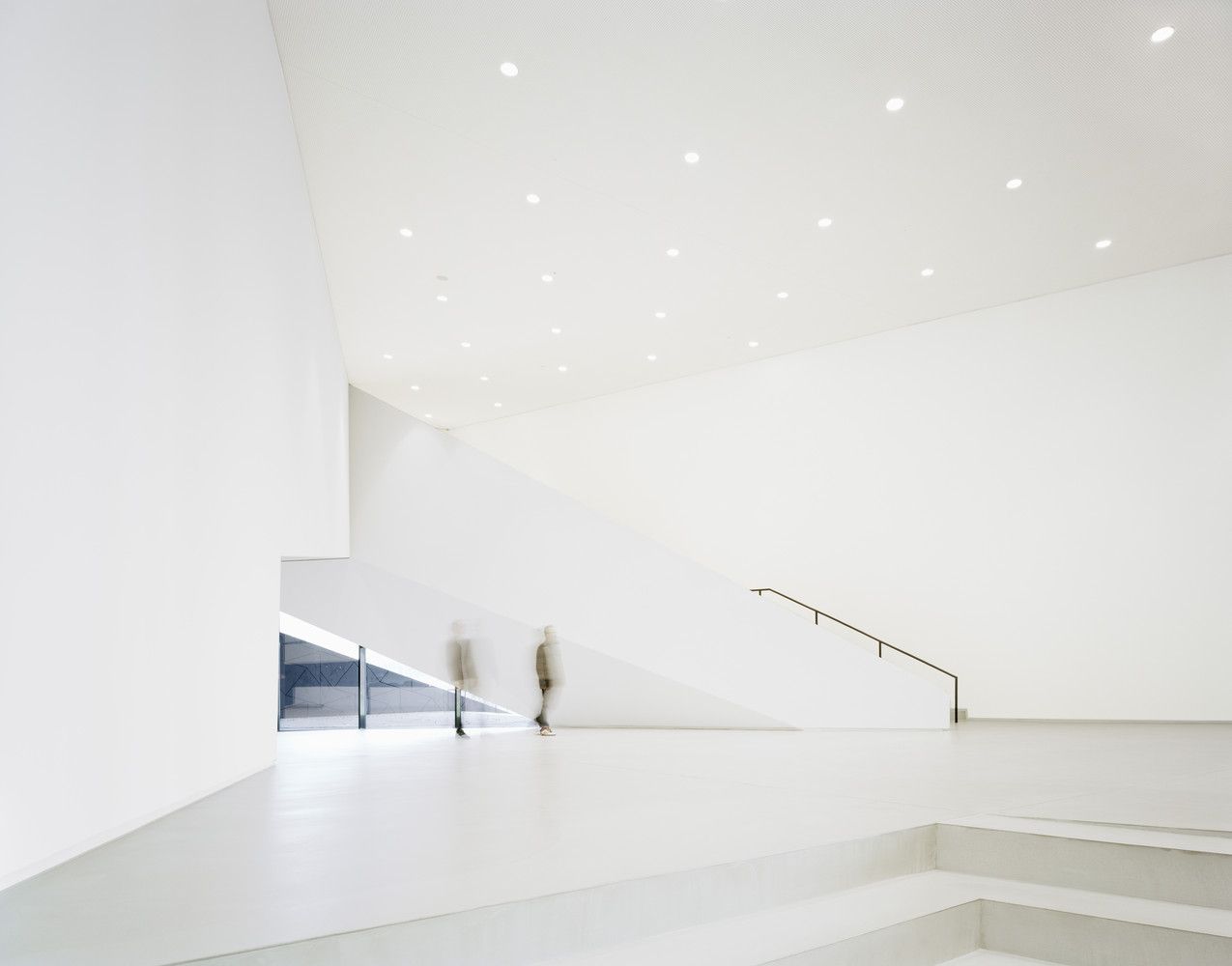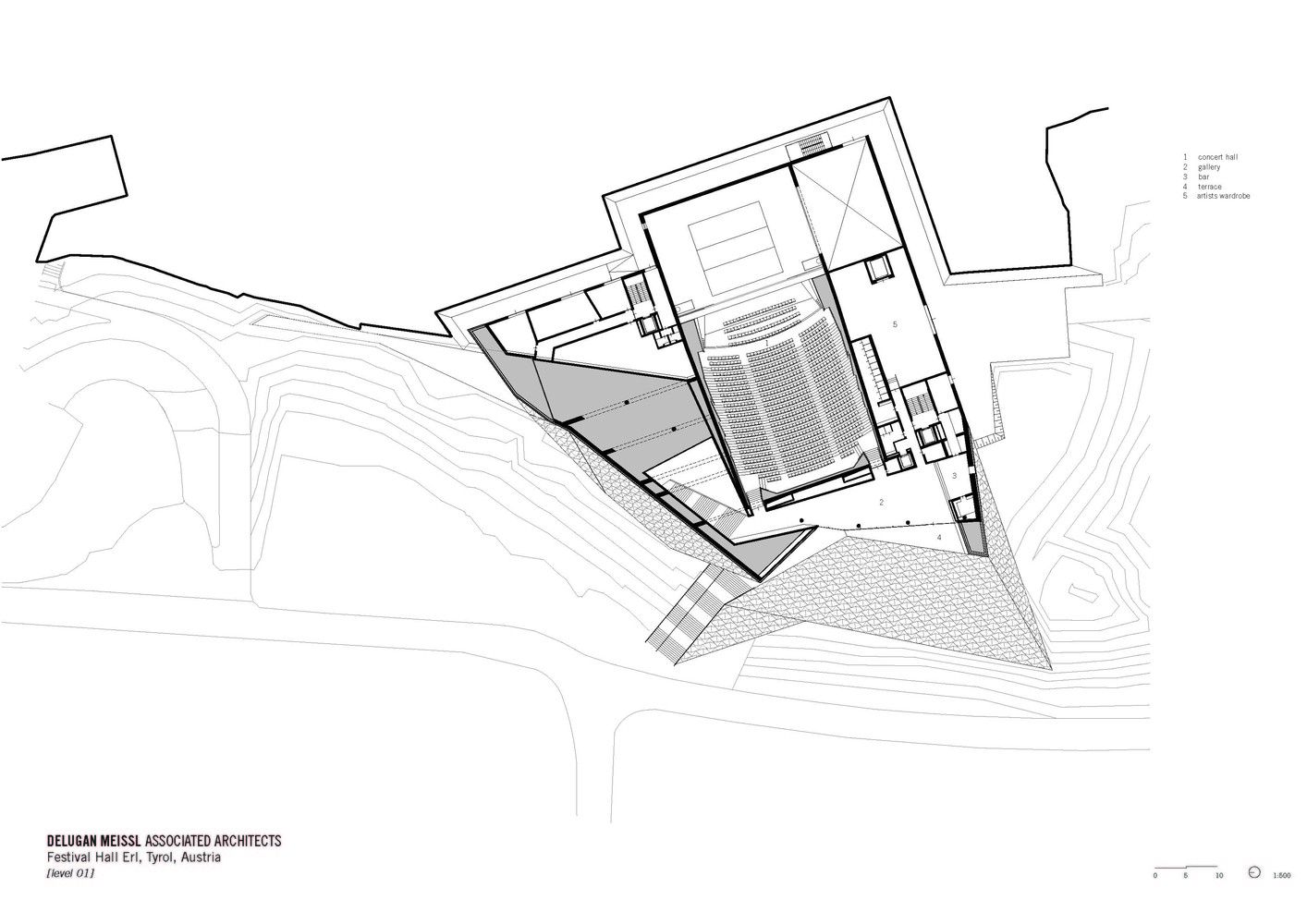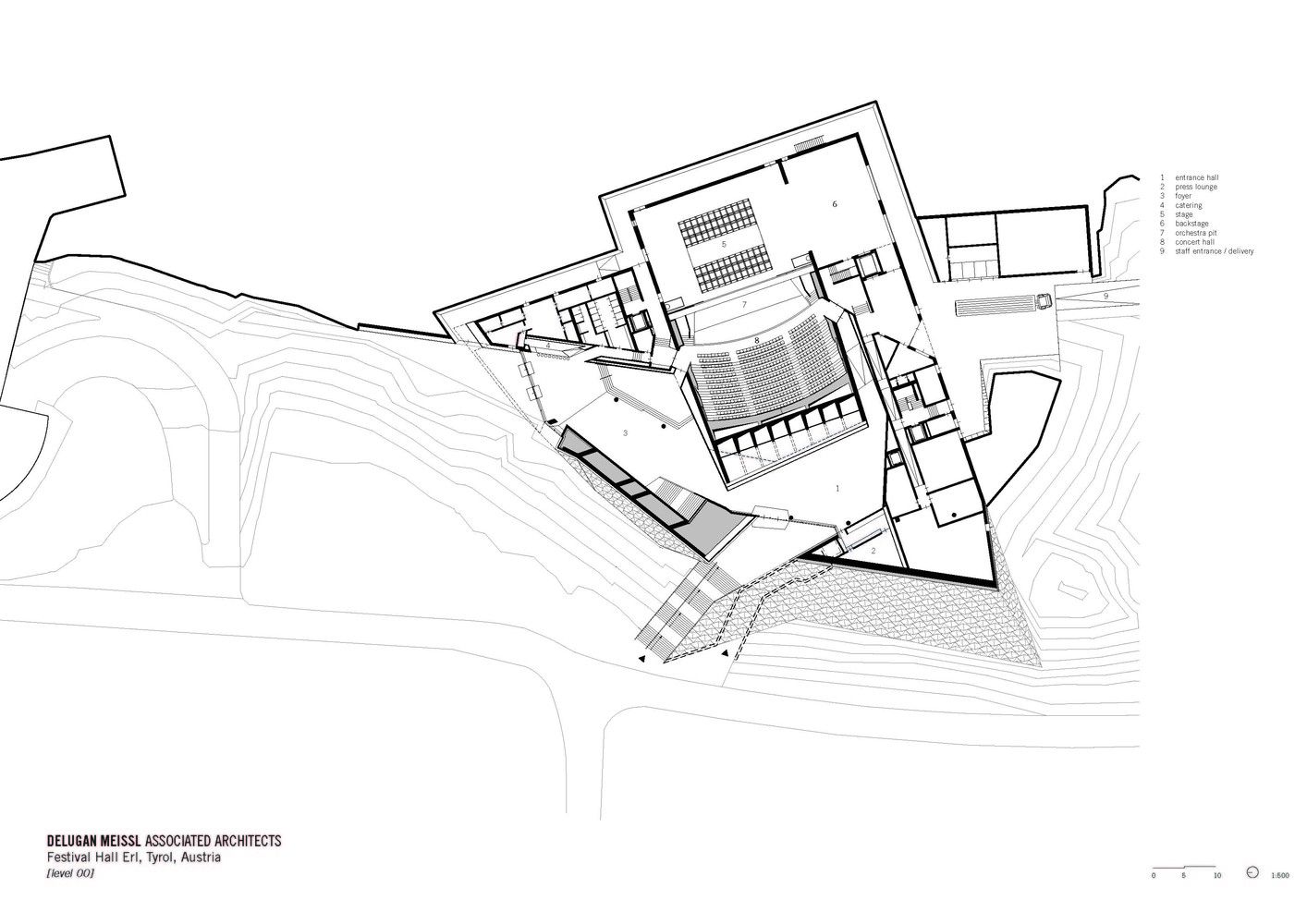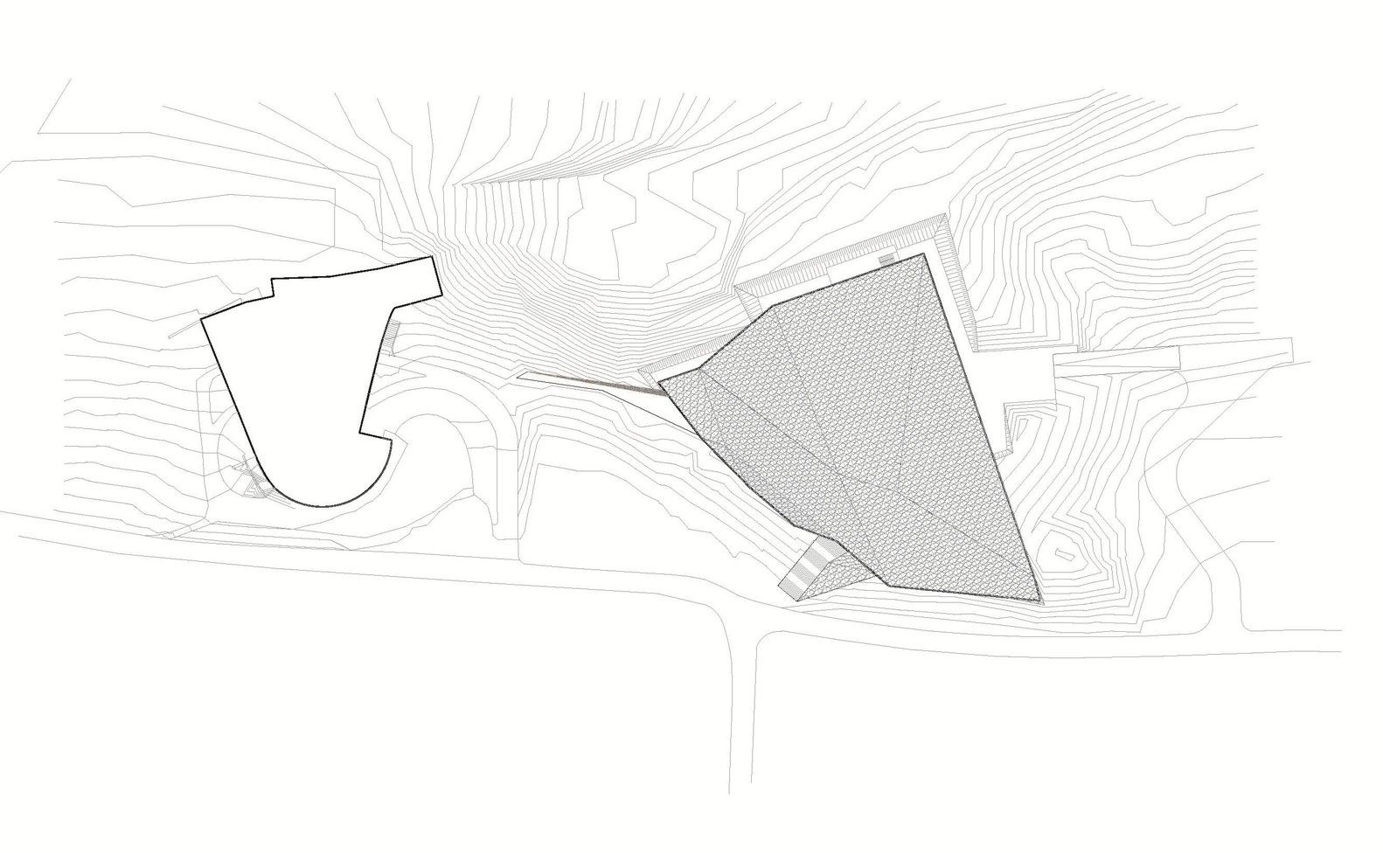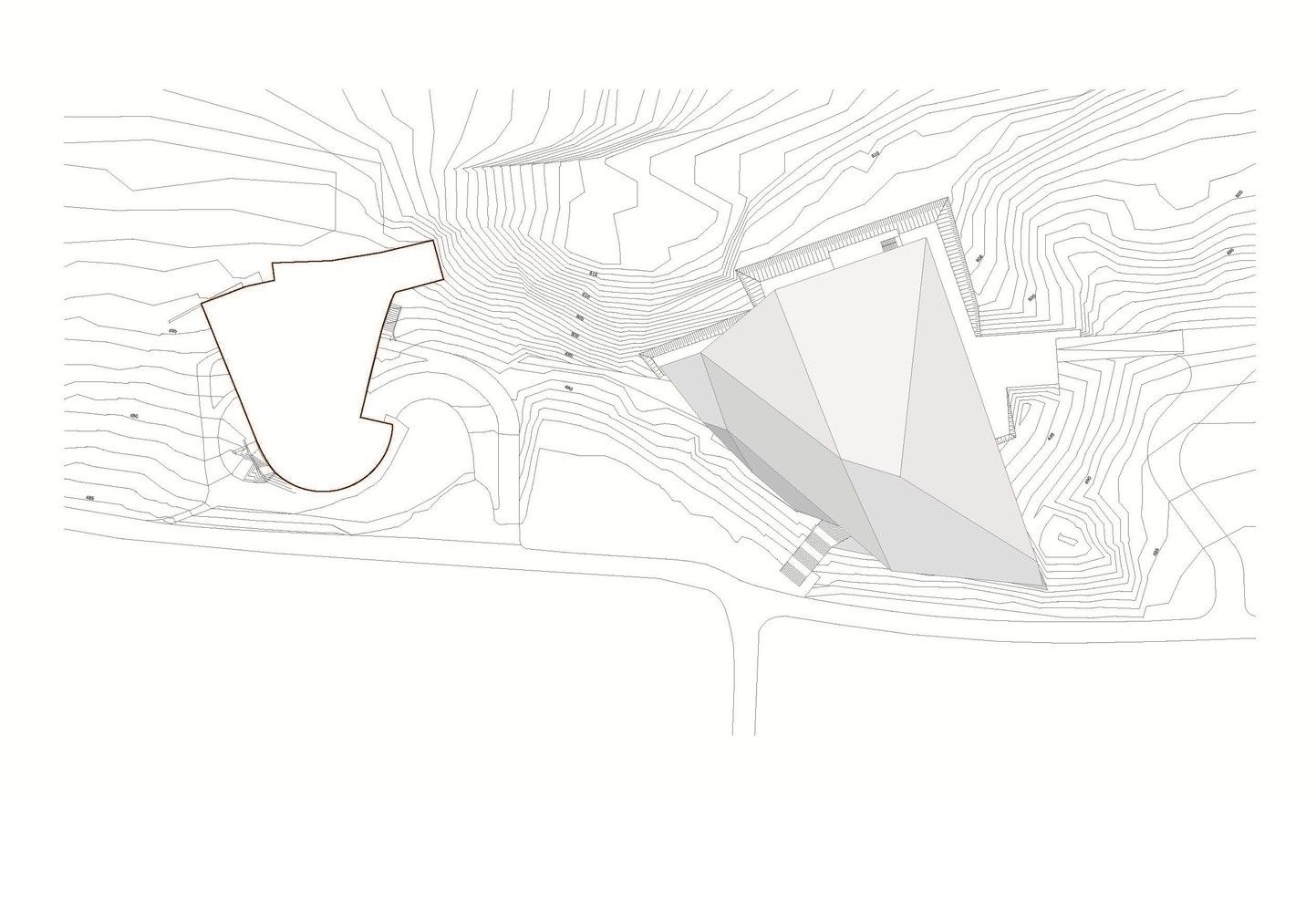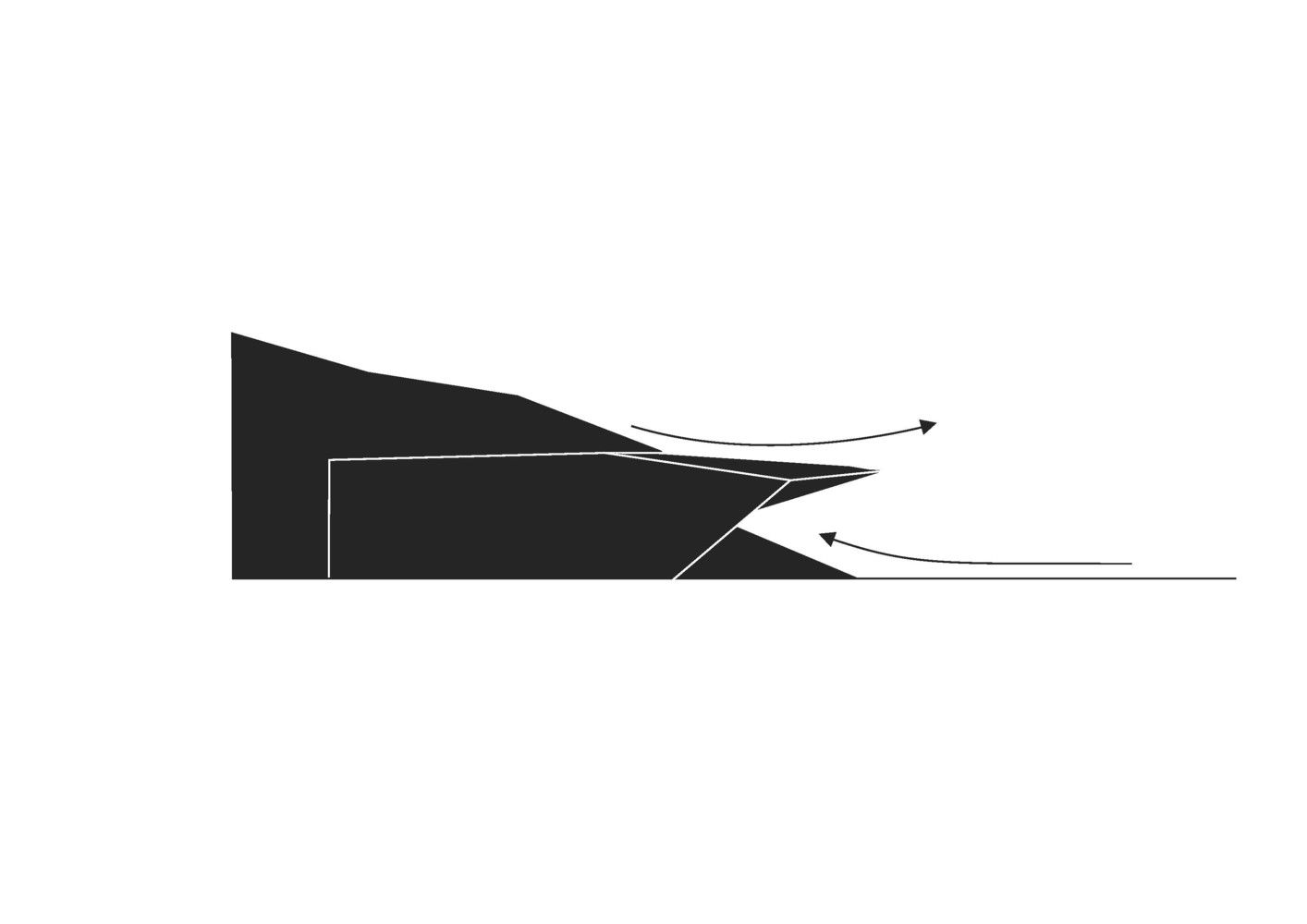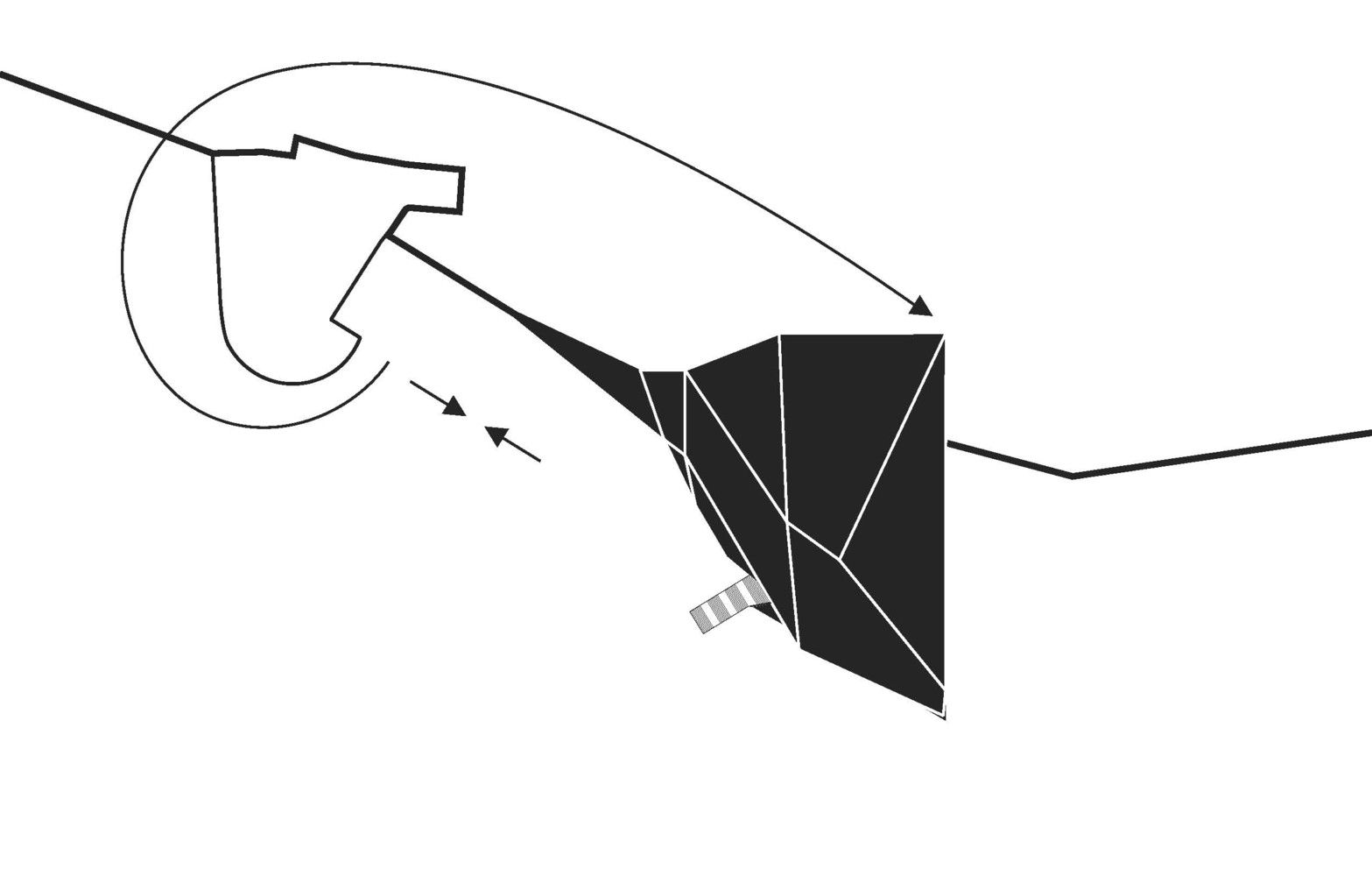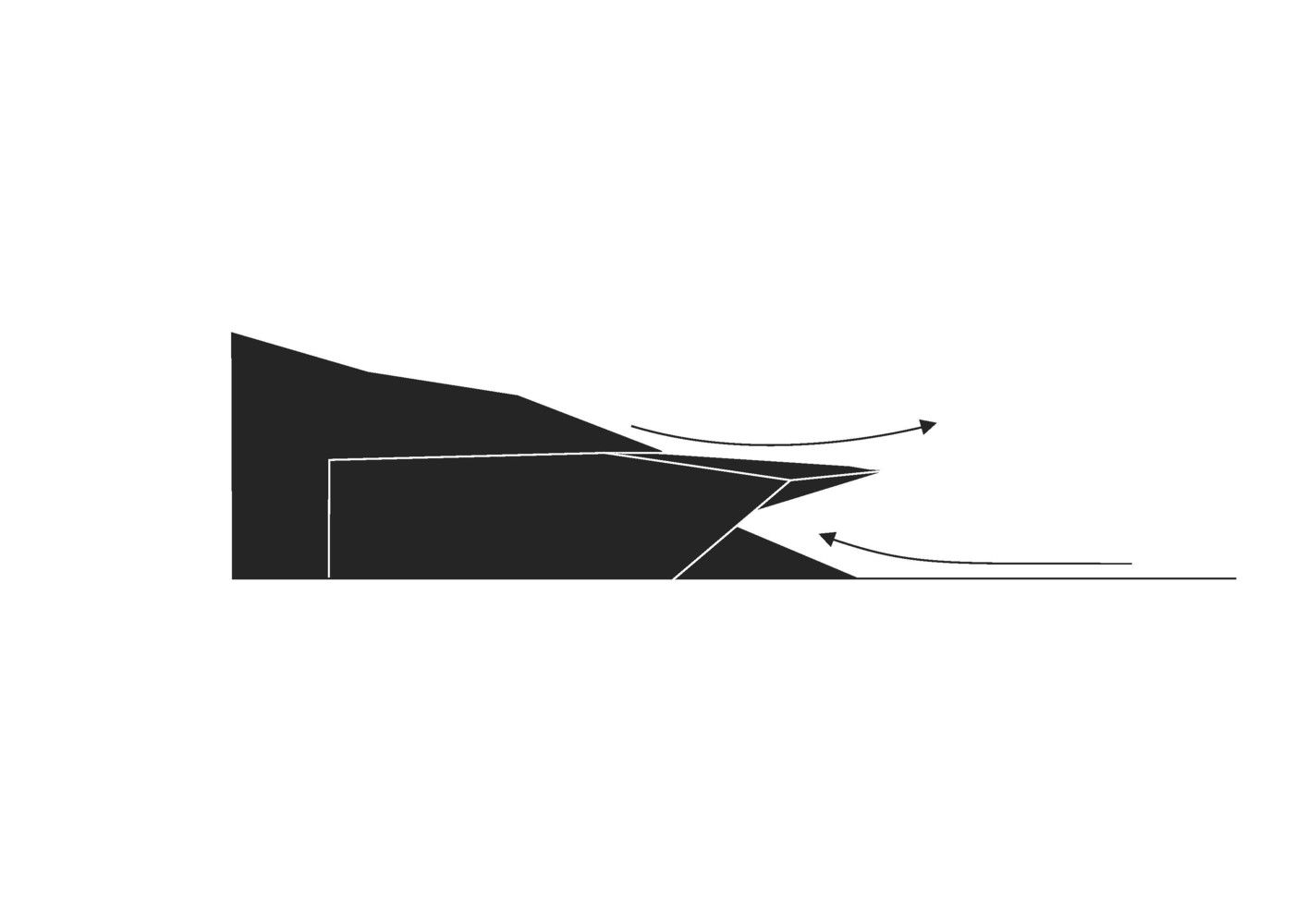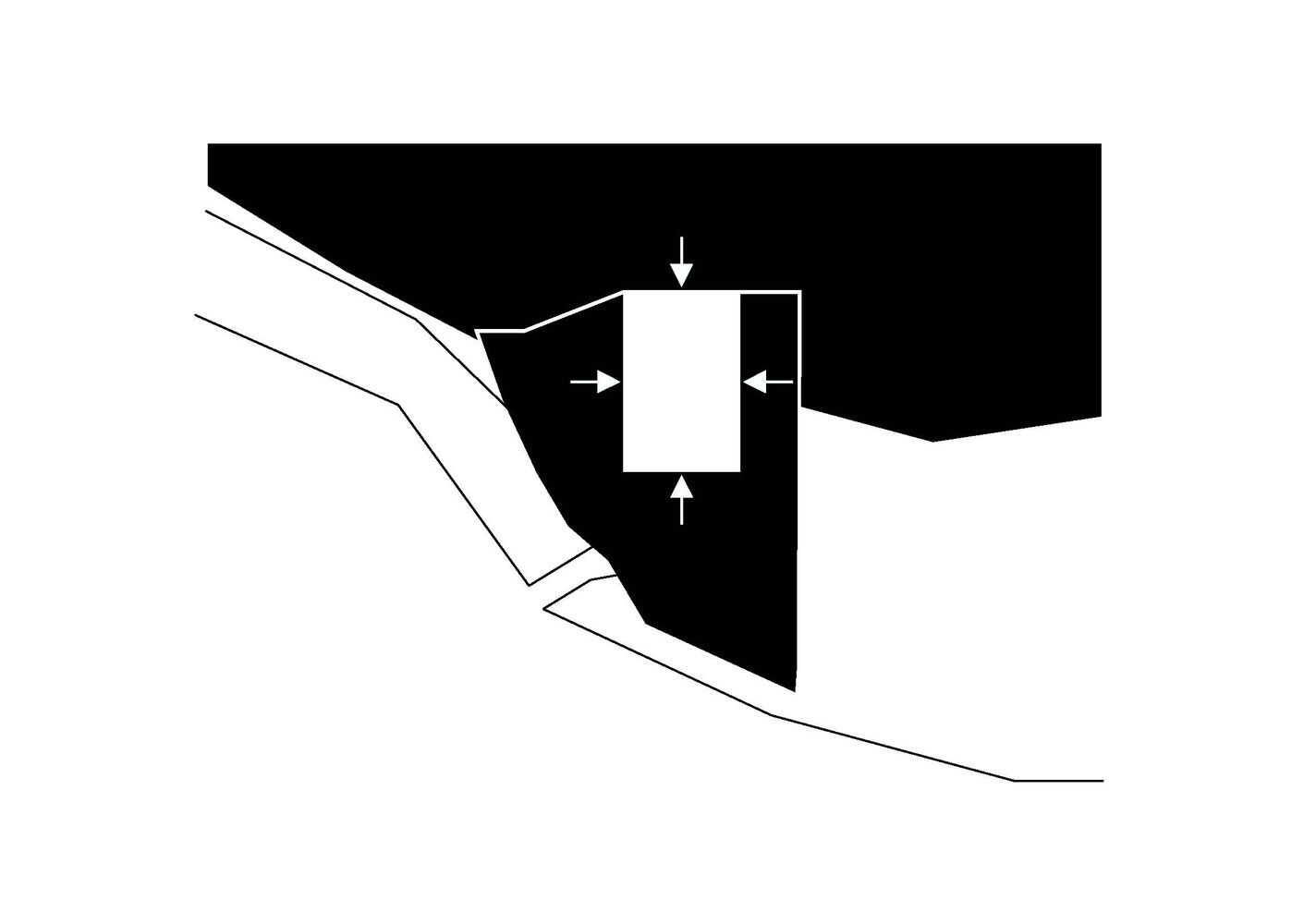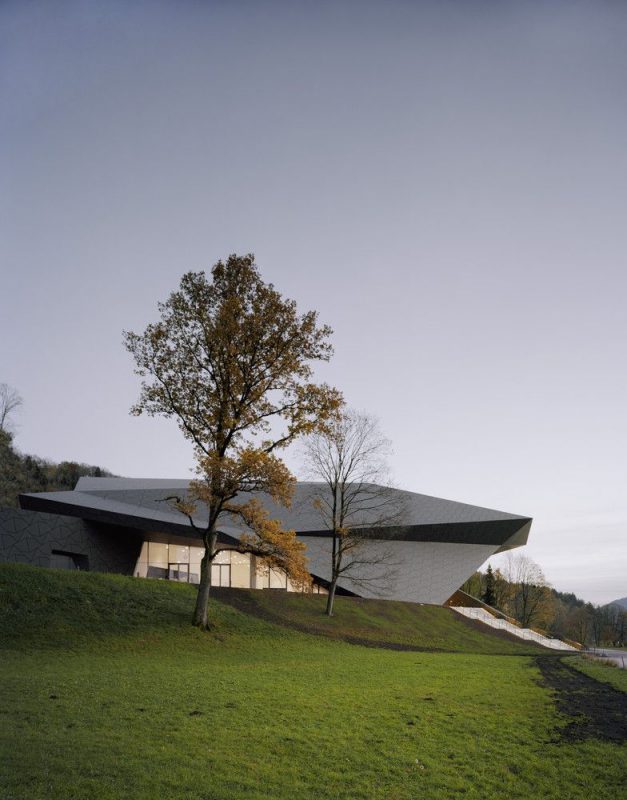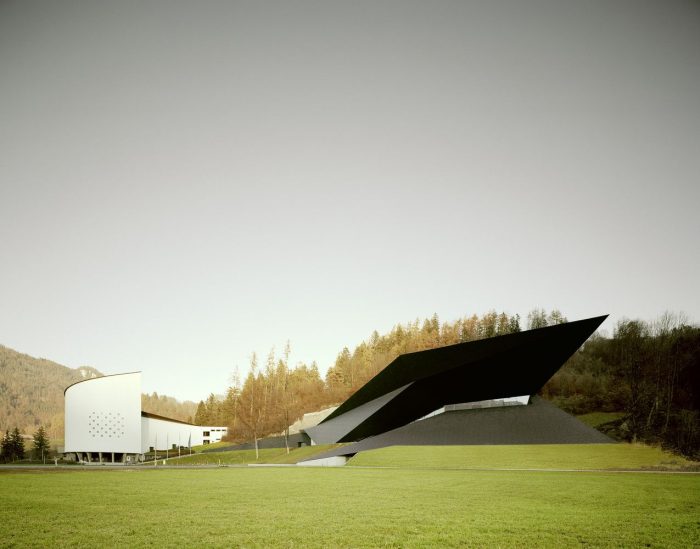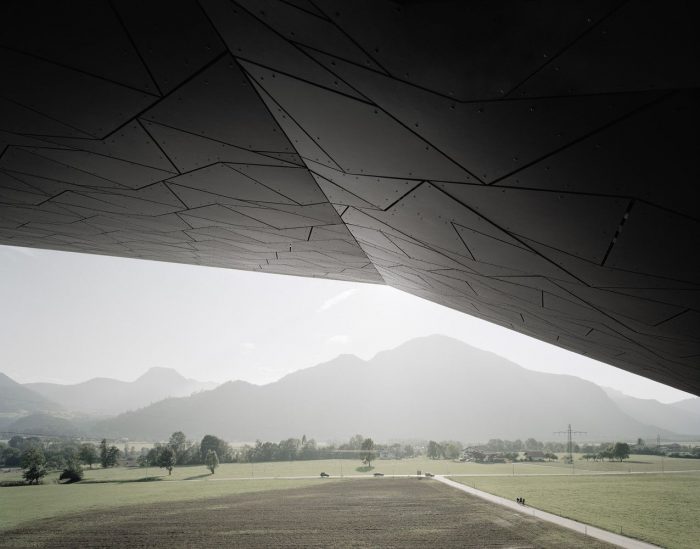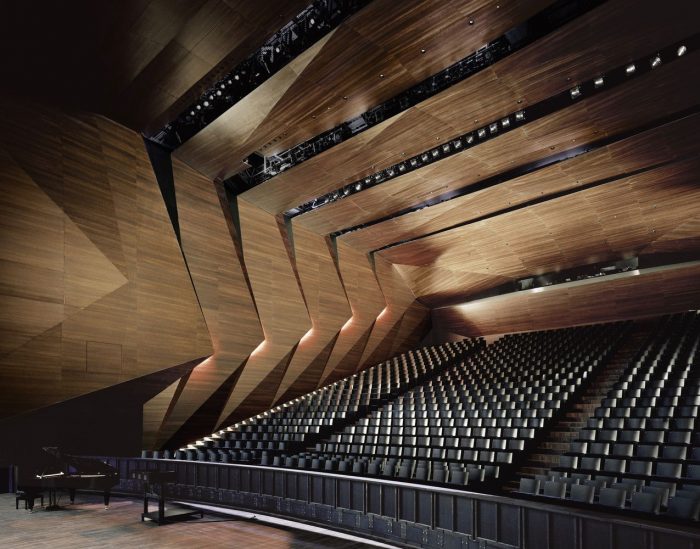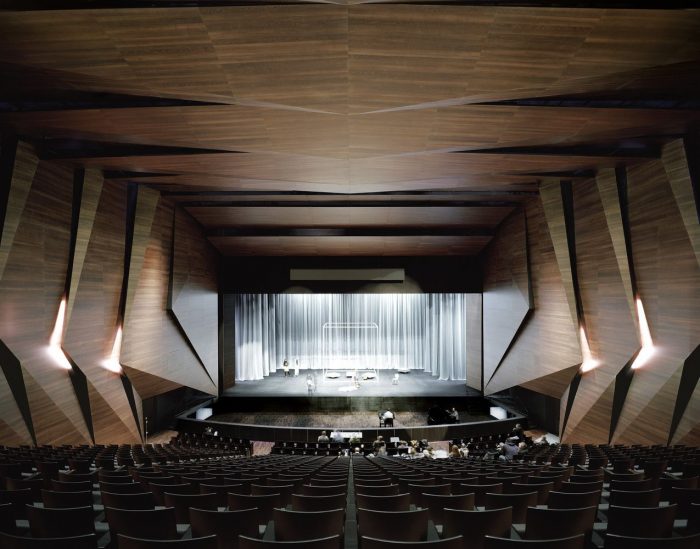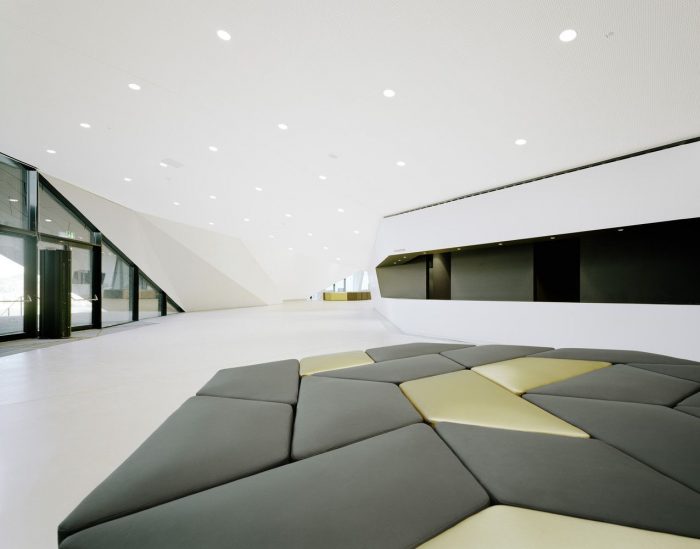Designed by Delugan Meissl Associated Architects, The geometry of the Festival Hall developed from the topographical conditions, placing it in an adequate relationship with the existing Passionsspielhaus. The building’s form and positioning both relate to the impressive landscape setting defined by the rock formations in the back, and to the dynamic presence of its neighboring historical counterpart. This existing building and the new one are oriented towards one another. They complement and elevate their respective architectural articulation of the reference to the landscape by interacting visually with one another.
The new building increases existing qualities of the natural and architectural environment. Aside from the geometry, color also enhances the duality between old and new. While the white surface of the Passionsspielhaus stands out optically during the time of the summer festival, the changing of seasons brings upon a chromatic reversal of the ensemble. The configuration of the Festival Hall resembles a tectonic stratification. Its crevices and faults lying in between indicate the way into the building’s interior. At nighttime, the incisions and folds in the distinctive facade allow insight into the radiant foyer.
Access
The topographic imprint on the new building is consequently continued within its interior. The design idea is guided by two defining parameters: the interrelation between the interior and the surrounding natural space as well as the spatial configuration of a functional, internationally acclaimed concert hall. Flowing visual and functional spatial references define the architecture. Areas with diverse usage and geometry show the creative engagement with communication and calm, dynamism and concentration. The sequences of movement are subtly guided by the sensory experience of the rooms. The access staircase is integrated into the landscape thus guiding visitors into the building.
Functions
Cloakroom and reception desk is situated near the entrance. The foyer – an asymmetric construction volume – allows manifold views onto the surrounding nature as well as onto the neighboring Passionsspielhaus. A staircase running in the opposite direction leads onto the upper gallery where the impressive relationship between interior and exterior space can be experienced again through the ample west facade made of glass. This level also hosts the building’s secondary functions. Orientation, room sequence, and functional relations are integral parts of the architectural dramaturgy: ample communication areas, retracting and expanding circulation areas and varying room heights translate the building’s tectonic geometry in a sensory manner.
In a consequent and effective way, the approach to the concert hall is staged through a gentle surge of the entrance level. The respective levels of the foyer are connected with the concert hall through two entrances. The latter is situated in the center of the building like a shell, its rear part being anchored in the rock. The transition from the foyer into the concert hall is accompanied by spatial and atmospheric change: dynamism, variability, and asymmetry give way to maximum concentration, static calm, and orthogonality.
Materials
Like the succession of rooms, the materials concept is equally defined by a sensorial perception of the respective usage areas. Differentiation in geometry, haptics, and surfaces of room elements increase the sensorial experience of single function areas and facilitate orientation. The shine in the foyer during the winter’s sunset increases the communicative character of this area of the encounter.
Following the metaphor of an exposed jewel, the concert hall is defined by a distinct change of materials: wood surfaces and subdued colors create a warm room composition of tense quiet thus directing the visitors’ attention onto the performance to follow. Multiple technical types of equipment and the possibility to transform the hall allows a varied use which reaches far beyond the function of a classical concert and festival venue.
Project Info
Architects: Delugan Meissl Associated Architects
Location: Mühlgraben, Austria
Architect in Charge: Sebastian Brunke
Design Team: Jörg Rasmussen, Torsten Sauer, Eva Schrade, Simon Takasaki, Anja Vogl
Manufacturers: EQUITONE, Knauf
Year: 2012
Type: Cultural Center
Photographs: Brigida Gonzalez
Project Name: Festival Hall
